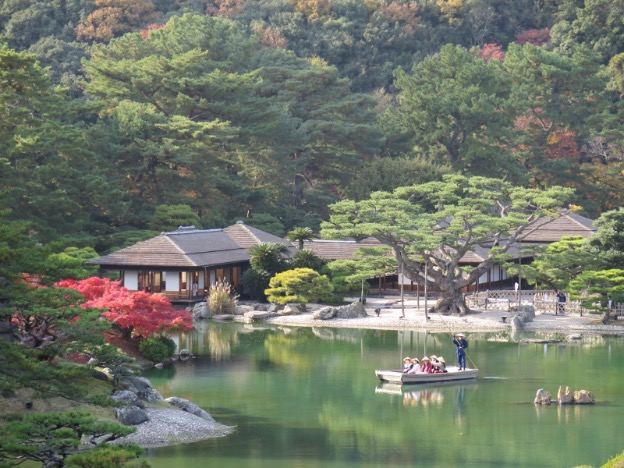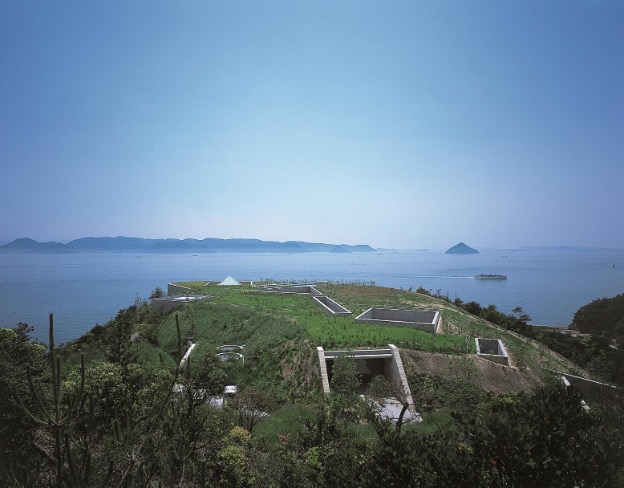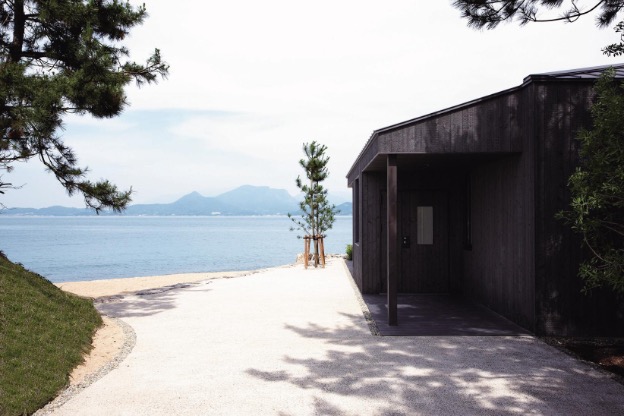Kagawa is Japan’s smallest prefecture but despite its size, the region is chock-full of spectacular scenery, delicious food, and world-renowned art, among other incredible attractions. Below we introduce you to some of the highlights of the region: Takamatsu, Naoshima Island, Shodoshima Island, and Teshima Island.
Takamatsu is a ferry hub for the islands of the Inland Sea, so you will likely visit it en route to the art islands of Naoshima or Teshima. The capital of the Kagawa prefecture, it is also home to the spectacular Ritsurin Garden (pictured below). This feudal strolling garden took more than 100 years to create, finally completed in 1745, is now recognized as a national treasure. The beauty of the garden is celebrated in the Japanese phrase “ippo ikkei”, meaning one step, one view, describing how when walking through the garden you are able to enjoy a change of scenery with every step. After you are done strolling, sample traditional Matcha tea at the historic, 17th century Higurashi-tei tea house located in the garden. While you are there be sure to take a guided boat tour in a Japanese-style wasen boat ride from a totally different vantage point.

After about one hour on a ferry from Takamatsu Port you’ll arrive at Miyanoura Port where Yayoi Kusama’s “Red Pumpkin” welcomes you as the symbol of Naoshima. Known as an “art island,” the art is blended into the island‘s outstanding nature and its occupants lifestyle. On the island lies the magnificent Chichu Art Museum which is home to a James Turrell exhibit that can only be described as surreal and Benesse House Museum both designed by the world famous architect Tadao Ando. There is also the Art House Project, in which unused homes have been turned into art exhibition spaces; it is truly a sight to behold. We recommend you stay over night, preferably at the Benesse House or the soon to be opened Rokasumi.
Shodoshima is the second-largest island in the Seto Inland Sea and is known as the Mediterranean of Japan, due to its year-round temperate climate along with being the birthplace of olive production in Japan (400 years years ago!). This is not the only food production that continues to thrive after so long: also on the island you can spot soy sauce slowly fermenting in wooden barrels or somen noodles drying out in the sun. In fact over half of Kagawa’s soy sauce is produced on Shodoshima, and you can visit the Soy Sauce Village, whose name comes from the high concentration of more than 20 soy sauce breweries and tsukudani makers (foods preserved in soy sauce) in the village. The island is not only a base for blissful weather and delicious food but also outstanding nature. At the Kankakei Gorge, you can see the entirety of the Seto Inland Sea, unusual rock formations, and the deep canyon below. Another stunning natural phenomenon is the Angel Road, which appears only at low tide to connect four small islands, allowing you to walk across the white sand to different islands. The island is also one of the venues for the Setouchi Triennale art festival, home of the Gift of the Sun, Regent in Olives, and other outdoor art installations which remain from past festivals.

Teshima is similar to Naoshima in the sense that it is considered an “art island” but after disembarking at Leura Port, you will first notice orchards of lemons, olives, and mandarin oranges growing healthily in the temperate climate of the Seto Inland Sea making it seem more like the Mediterranean than Japan. The terraced rice paddies on the mountainsides create a stunning view as they cascade down to the water. But this is not the only draw to this idyllic island; art expertly interwoven with the natural scenery makes this a really outstanding destination. The main attraction is the Teshima Art Museum (pictured above), which is home to one of the most contemplative contemporary works of art in Japan, set amongst terraced rice fields. Art is scattered around the island’s three fishing villages, like the Teshima Yokoo House and the Les Archives du Coeur (“Heart Archives”). Les Archives du Coeur (“Heart Archives”) is located along the beach in the eastern outskirts of Karato, this is one of the multiple locations across the world where visitors can make recordings of their heartbeat and listen to the recorded heartbeats of others.
What truly makes this region unique is the way the natural world mixes with tradition and art resulting in a rich culture that exists only in this part of the world. An easy addition to any trip to Japan, these islands have something for everyone in every season.

